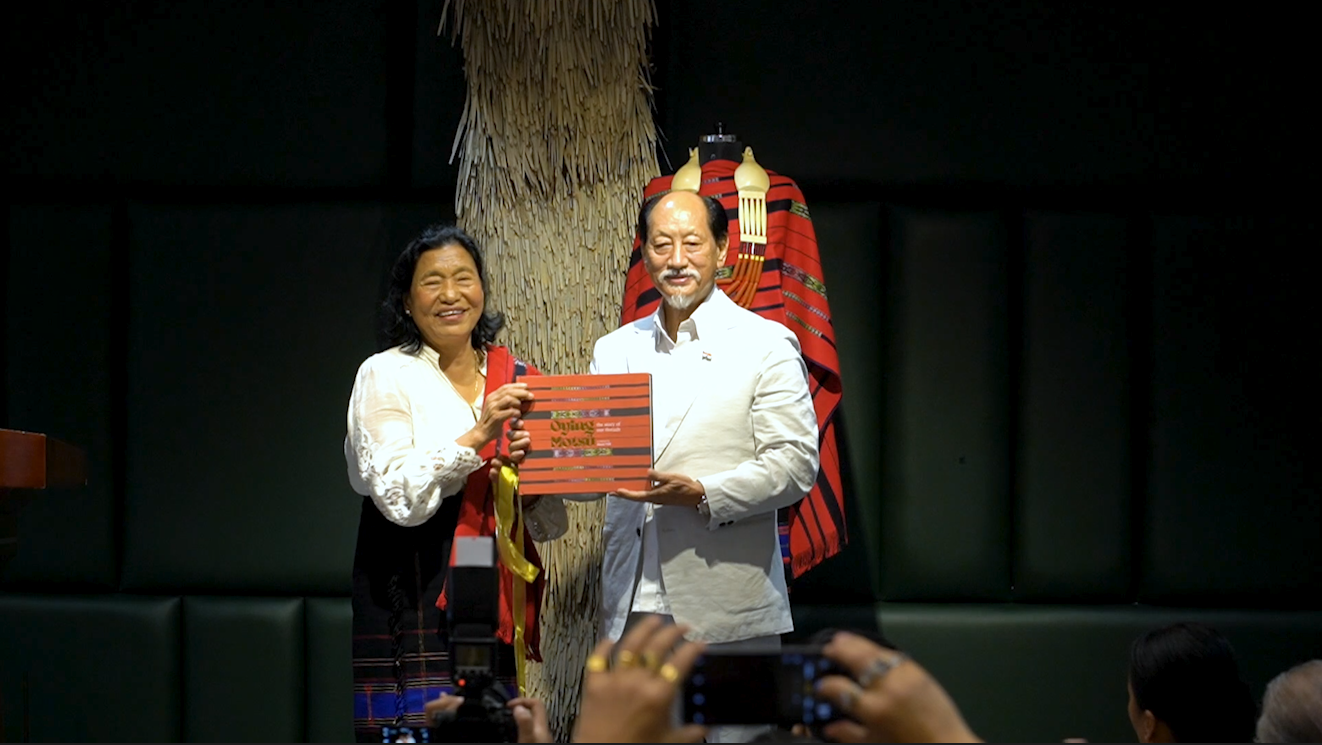FRIDAY, AUGUST 29, 2025
- Home
- CM Rio launches 'Oying Motsü-The story of our threads'
CM Rio launches 'Oying Motsü-The story of our threads'
Chief Minister Neiphiu Rio launches ‘Oying Motsü- The story of our threads,’ authored by Abeni TCK.
Published on Aug 29, 2025
Share

KOHIMA — A book titled ‘Oying Motsü- The story of our threads,’ authored by Abeni TCK, was officially launched by Chief Minister Neiphiu Rio on Friday at Hotel Vivor, Kohima.
The book is a compelling memoir that weaves together personal history and cultural heritage, offering a deeply personal journey through the ancient textile traditions of the Naga people.
It also explores the significance of traditional weaves, particularly the Lotha tribe's craftsmanship, and how their intricate patterns serve as both artistic expressions and historical narratives.
Also read: Bailey Baptist College stages street plays on HIV/AIDS
Through rich storytelling, the author shares her experiences as a weaver, designer, and pioneer in the modern Naga weaving movement, while also highlighting the wisdom and legacy of the foremothers who passed down this remarkable skill.
Abeni TCK shared that the book is not just a personal account of her weaving journey but also a testament of the incredible legacy of ancestors who has carried this art from one generation to the nest, and that the book is a result of many contributions of fie long dedicated years.
She narrated how her journey with threads began as a young girl, watching and assisting elders weave. This passion inspired her to design modern Lotha tribe weaves, rediscover heritage motifs, and explore new cultural horizons, collaborating with Queen Angya Likhao from Shangnyu village in Mon district. Together, they embarked on a weaving transformation of Naga modern designs, tracing back to the 1980s.
Though the main part of the book focus on the heritage, traditional and modern weaves of the Lotha, she said that it also centres upon the extraordinary contribution and achievement of fore-mothers who passed down the skill, designs and purpose for which they wove.
“Our cloths are not created for functionality alone but each piece of garment reveal the remarkable thought process of our ancient mothers who took it upon themselves to tell us about our traditions, with each design representing values of that era and the sentiments of the community,” she said.
She also shared that in the weaving narrative of the Nagas, “most of what we know has been told orally to us, but with generations passing on there is a great need for our written literature to speak on till posterity, on behalf of the older generation.”

